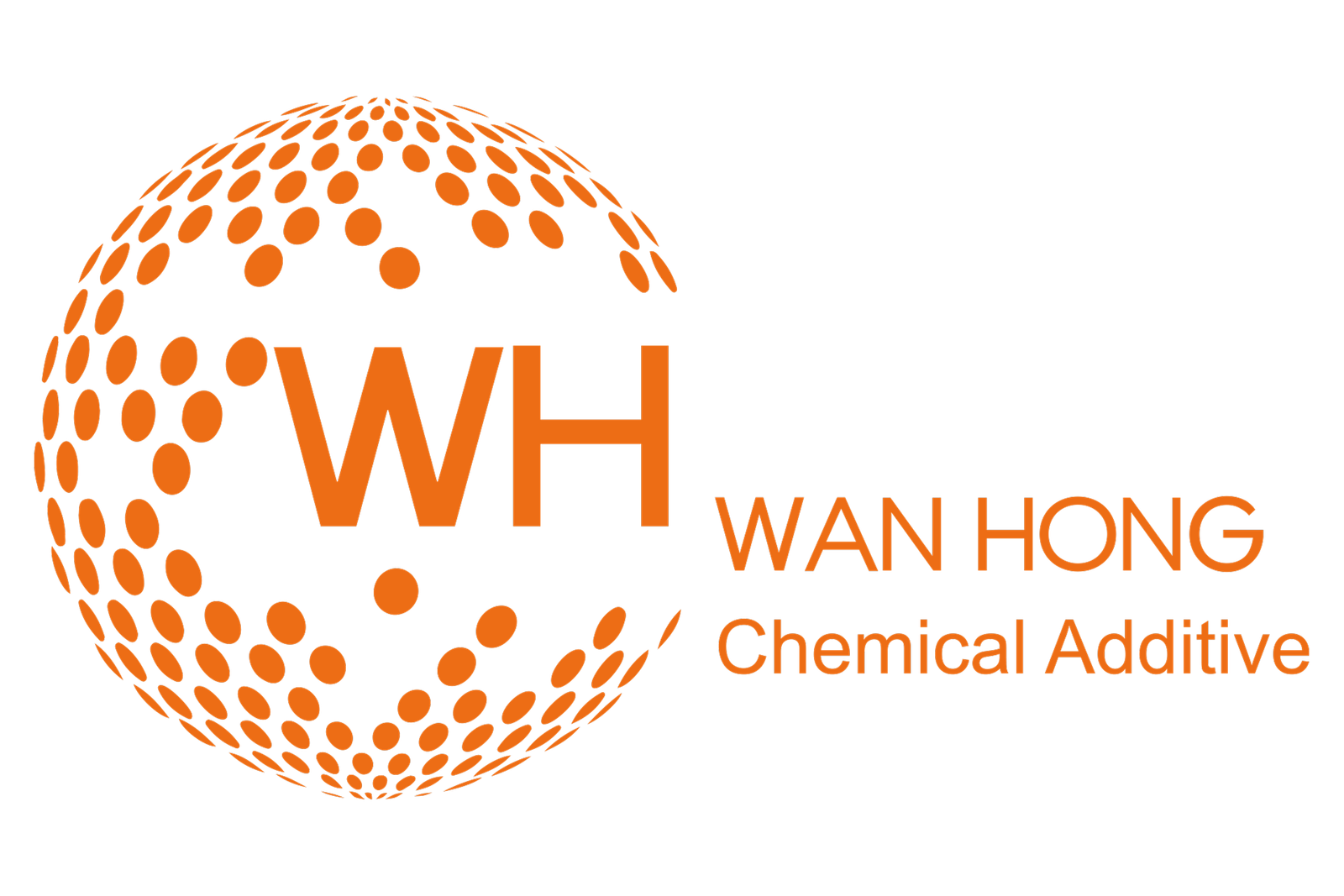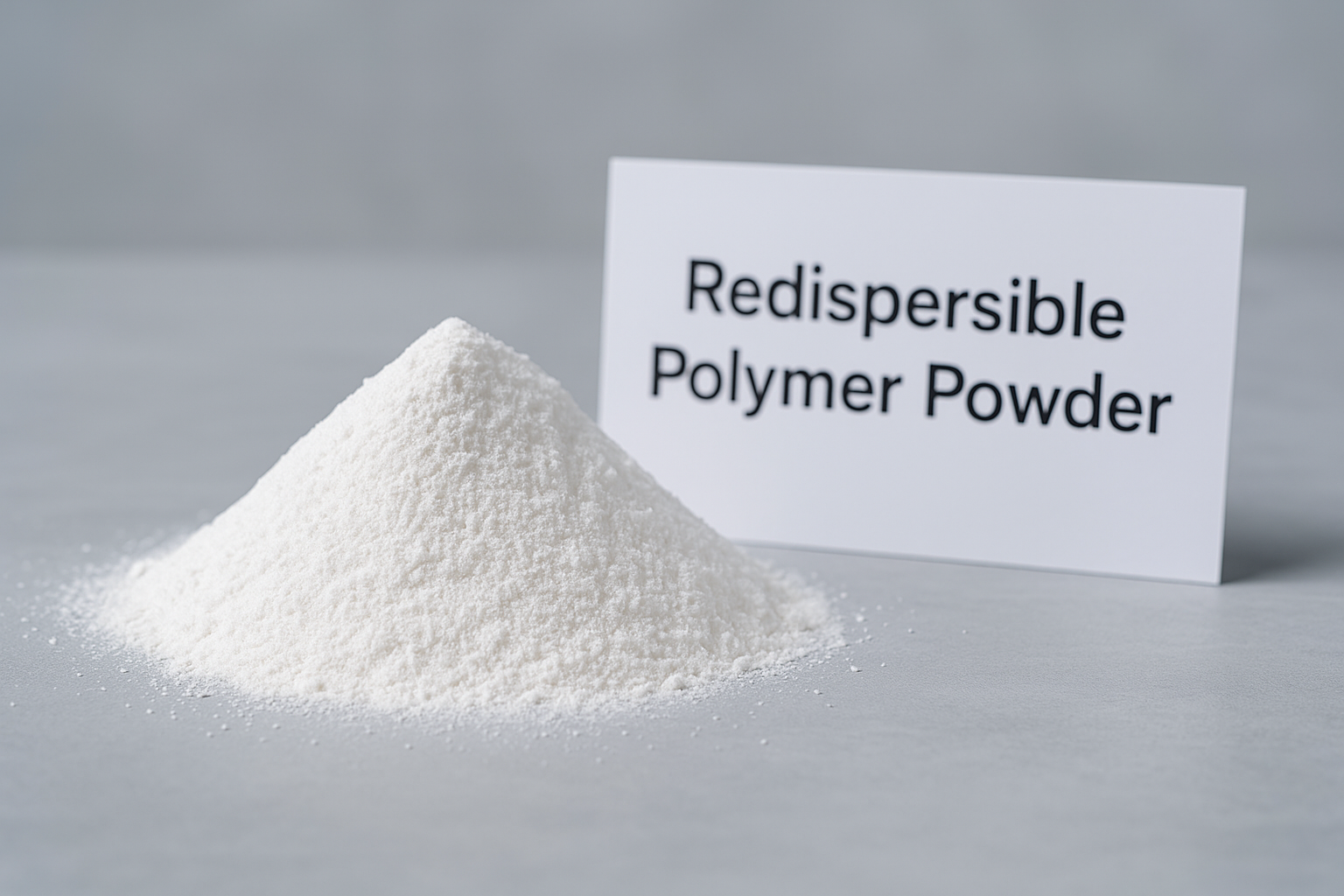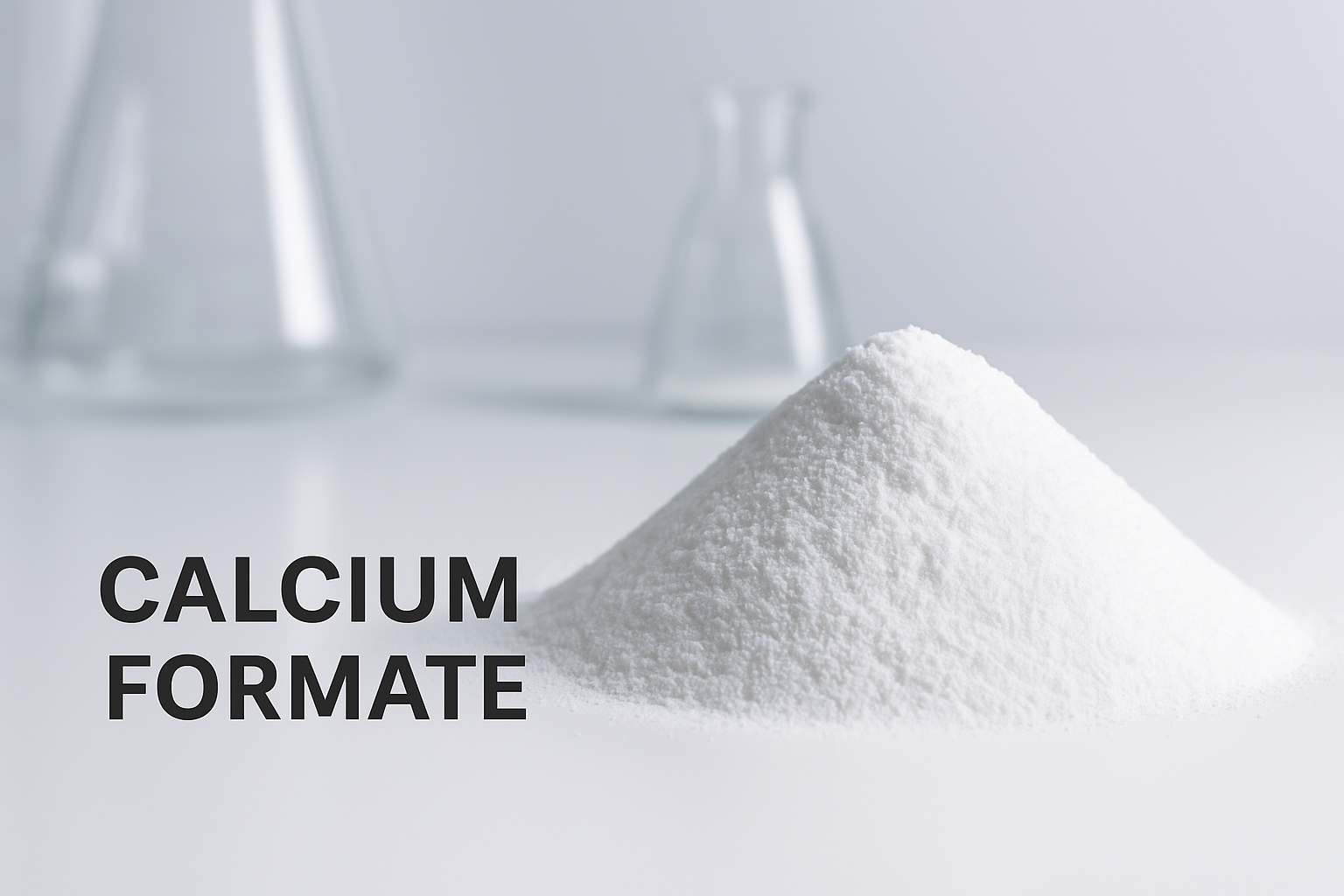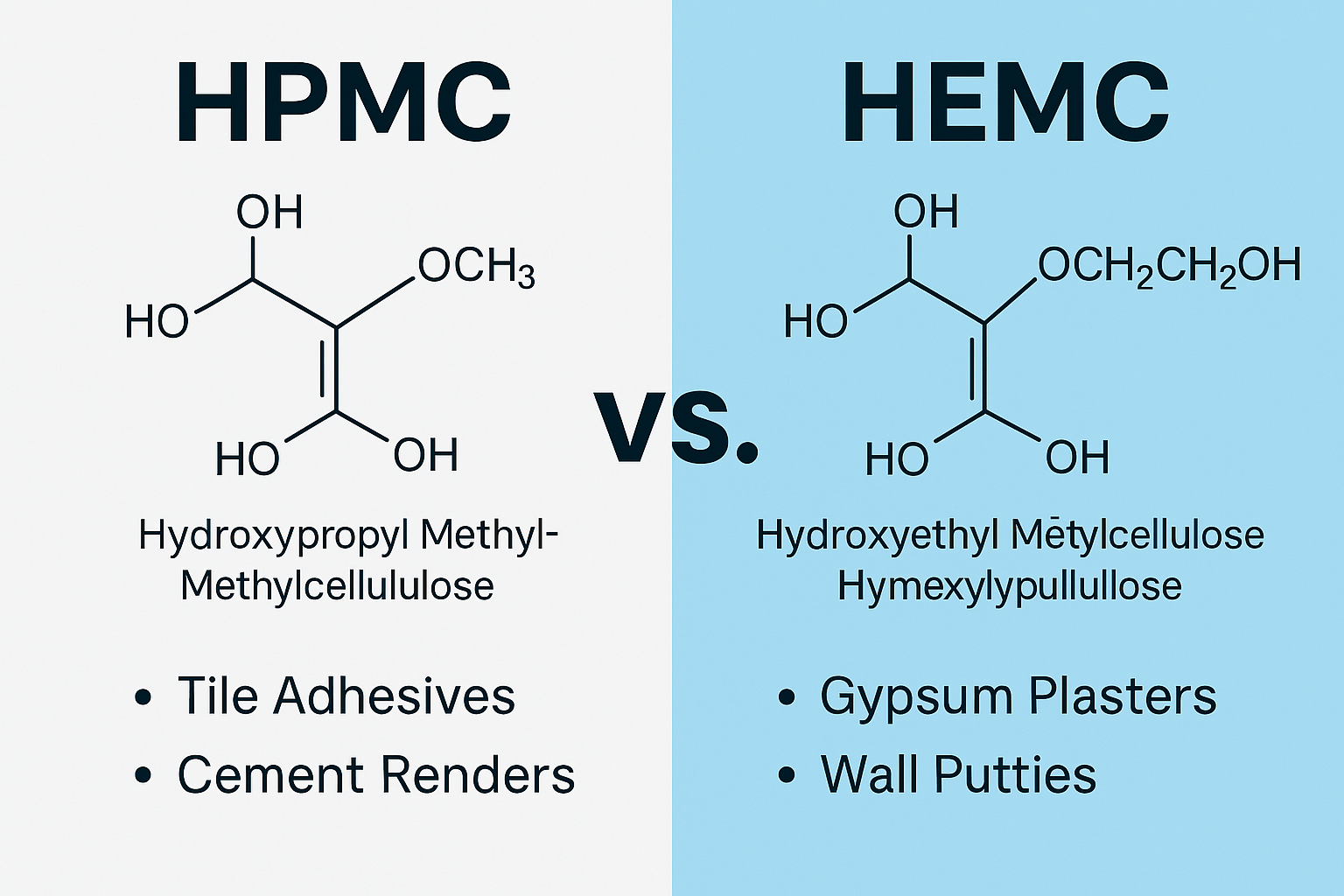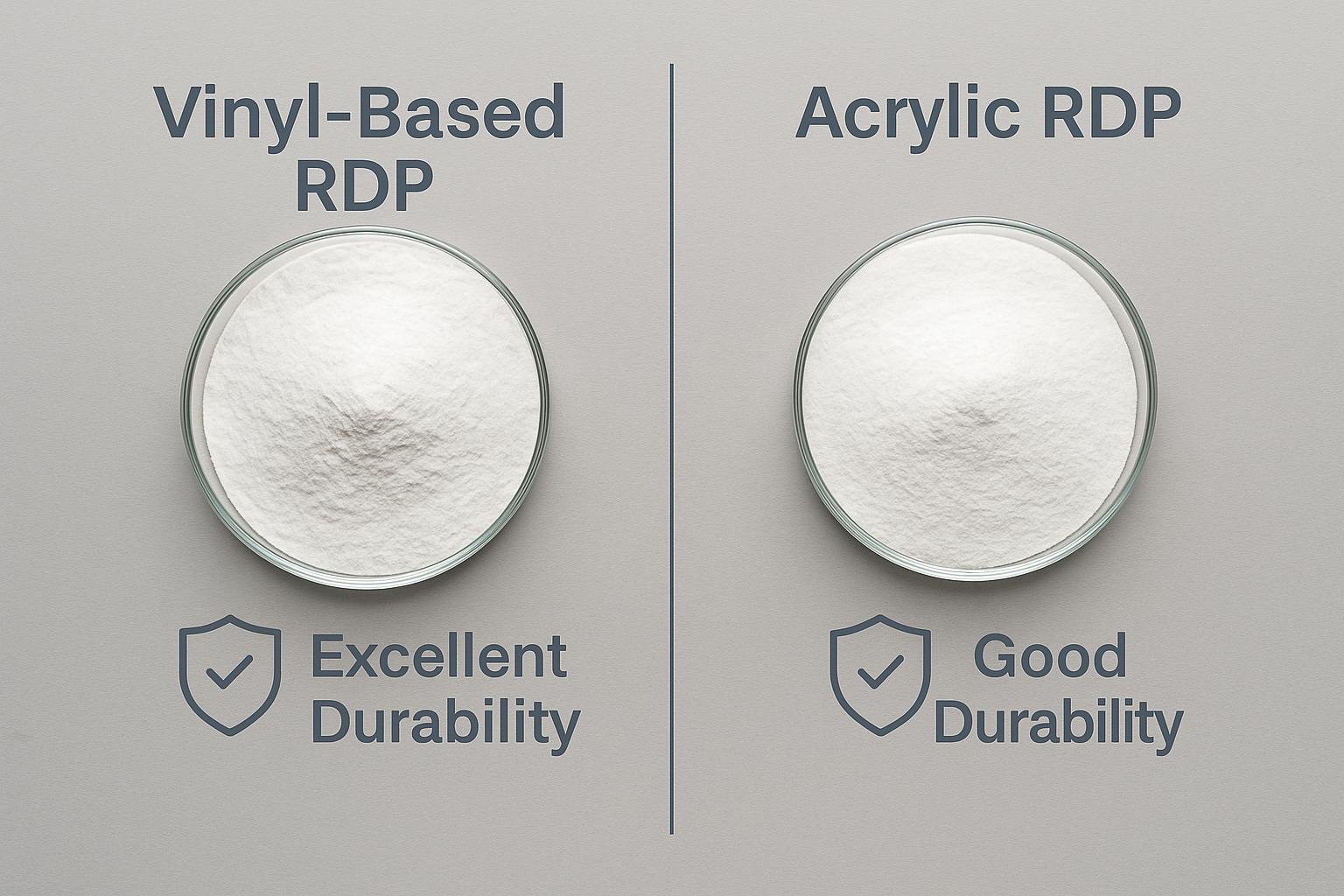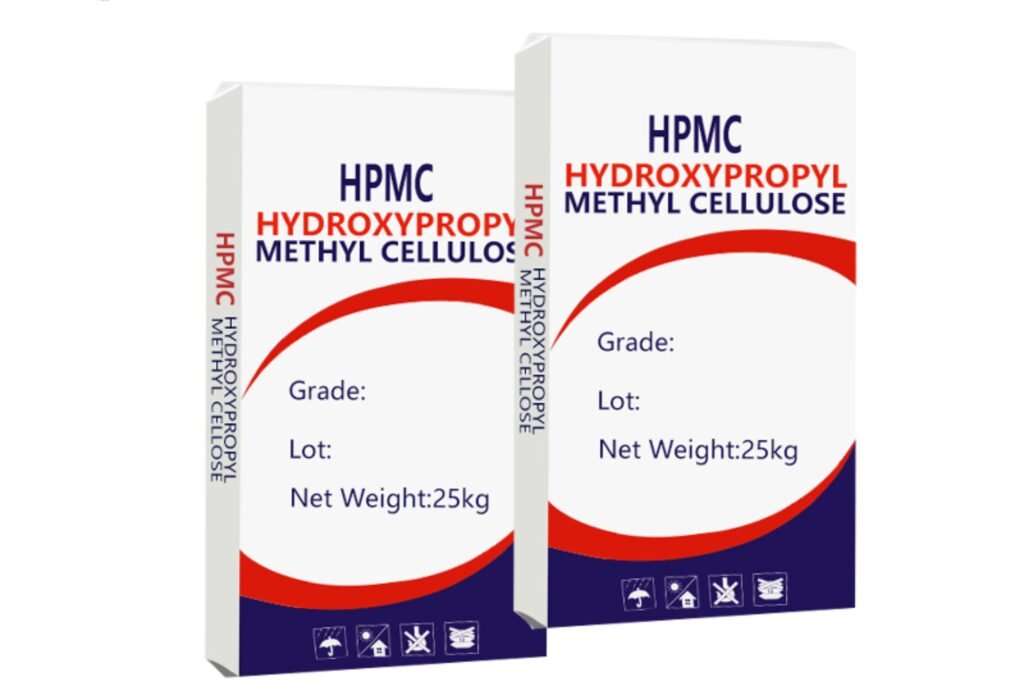Are you confused about which cellulose derivative to use in your products? The wrong choice between HEC and HPMC can lead to formulation failures and wasted resources. Let me help you make the right decision.
When choosing between HEC (Hydroxyethyl cellulose1) and HPMC (Hydroxypropyl methylcellulose2), consider your application requirements. HEC excels in water retention and thickening, while HPMC offers better temperature stability and broader pH compatibility. Your specific project needs should guide your selection.
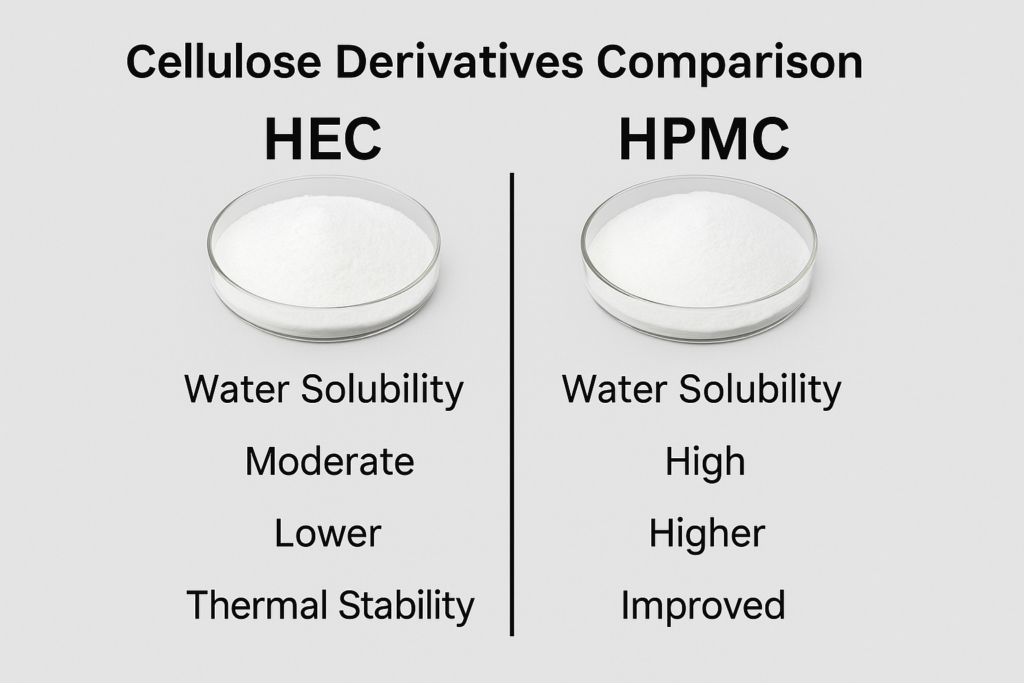
Understanding the differences between these cellulose derivatives can save you time and money. I've worked with hundreds of customers across Saudi Arabia, UAE, and India who initially struggled with this choice. By the end of this article, you'll know exactly which product is right for your specific application.
HEC vs HPMC: What are they?
Many manufacturers face costly production delays because they don't understand the basic properties of these materials. I've seen projects fail simply because the wrong cellulose derivative was chosen from the start.
HEC (Hydroxyethyl cellulose1) and HPMC (Hydroxypropyl methylcellulose2) are both cellulose ethers derived from natural cellulose. HEC is modified with hydroxyethyl groups, while HPMC contains both hydroxypropyl and methyl groups, giving each unique properties for different applications.
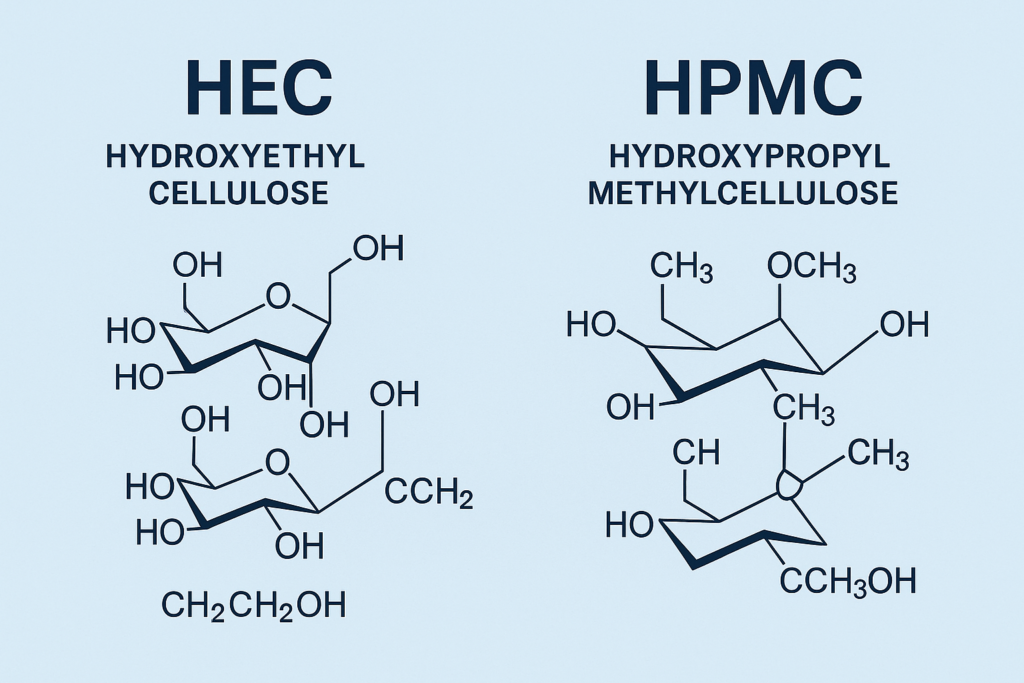
These two cellulose derivatives form the backbone of many industrial formulations, but their chemical structures create significant differences in performance. HEC is produced through the reaction of cellulose with ethylene oxide, resulting in hydroxyethyl groups attached to the cellulose backbone. This gives HEC excellent water solubility and thickening properties.
HPMC, on the other hand, undergoes a more complex modification process. The cellulose is first treated with sodium hydroxide, then reacted with both methyl chloride and propylene oxide. This dual modification creates a polymer with both methoxy and hydroxypropyl groups.
From my experience working with factory owners in developing countries, I've found that understanding these basic structural differences is crucial for proper application. One customer in Pakistan was using HEC in a cement-based formulation where the high alkalinity was breaking down the polymer. After switching to HPMC, his product stability improved dramatically, saving him thousands in returned products.
HEC vs HPMC: What are the differences?
Your production efficiency could drop by 30% if you select the wrong cellulose derivative. I've helped clients who were facing serious compatibility issues that traced back to not understanding these key differences.
The main differences between HEC and HPMC lie in their thermal gelation properties, pH stability, and compatibility with other ingredients. HEC dissolves at lower temperatures (below 40°C) but lacks thermal gelation, while HPMC offers superior thermal gelation (around 65-90°C) and broader pH stability (2-12).
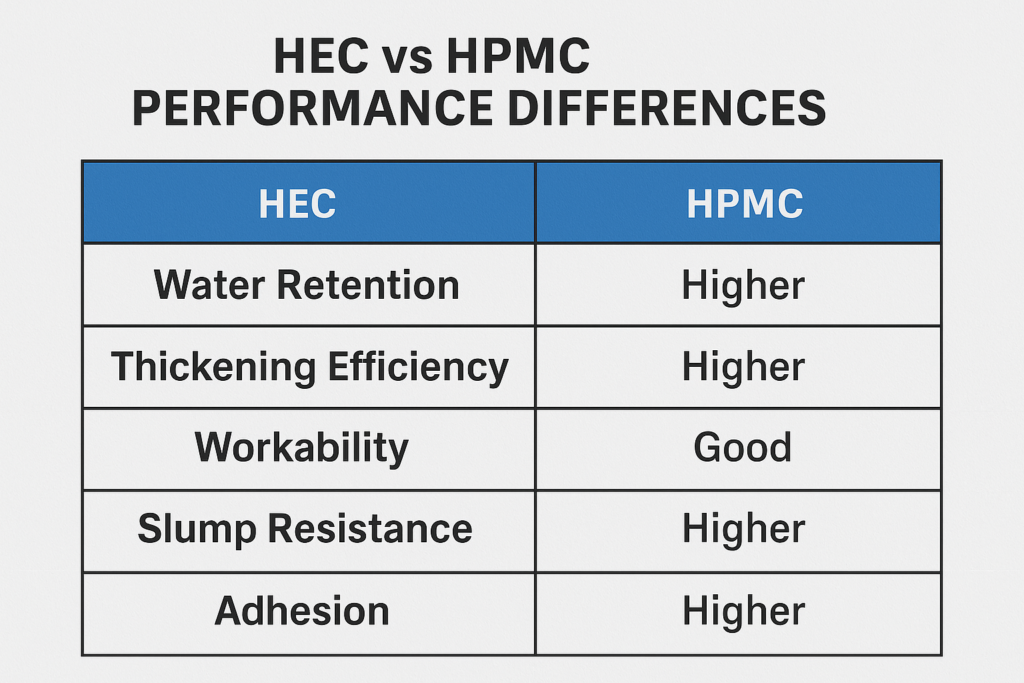
When we look deeper into the performance characteristics of these two materials, several key differences emerge that can significantly impact your final product. Let me break these down in a more structured way:
Performance Parameter Comparison
| Property | HEC | HPMC | Impact on Application |
|---|---|---|---|
| Dissolution Temperature | Dissolves at room temperature | Requires hot/cold technique | HPMC needs proper dissolution method |
| Thermal Gelation | Limited thermal gelation | Strong thermal gelation (65-90°C) | HPMC better for applications requiring heat stability |
| pH Stability | 5-11 | 2-12 | HPMC offers wider formulation flexibility |
| Salt Tolerance | Lower | Higher | HPMC better in high-electrolyte formulations |
| Surface Activity | Lower | Higher | HPMC provides better emulsification |
| Water Retention | Very high | High | HEC superior for immediate water retention |
| Viscosity Stability | Good | Excellent | HPMC maintains viscosity longer in storage |
I recall working with a large mortar manufacturer from Brazil who was experiencing inconsistent product performance across different seasons. Their HEC-based formulation worked perfectly in cooler months but failed during summer. After testing their application conditions, we discovered the ambient temperature was exceeding HEC's stability range. Switching to HPMC resolved their seasonal quality variations completely.
Applications of HEC vs HPMC?
Selecting the wrong cellulose derivative for your specific application can waste thousands of dollars and months of development time. I've guided many clients through this process after they experienced formulation failures.
HEC is ideal for applications requiring immediate thickening and water retention like paints, cosmetics, and drilling fluids. HPMC excels in applications needing delayed dissolution, temperature stability, and broader pH compatibility, such as construction materials, pharmaceuticals, and food products.

The application landscape for these two materials is quite diverse, and selecting the right one depends heavily on your specific requirements. Let me share some insights from my experience working with various industries:
Construction Industry Applications
In construction materials, both HEC and HPMC find extensive use, but for different reasons. HEC provides immediate water retention, making it excellent for quick-setting mortars and gypsum-based products. However, HPMC's delayed dissolution and excellent workability make it the preferred choice for tile adhesives, self-leveling compounds, and EIFS systems.
One of our clients in the UAE was producing exterior renders using HEC. During application in hot weather, they faced significant issues with workability time. After switching to our specially formulated HPMC with enhanced water retention, their open time extended by 45%, dramatically improving applicator satisfaction and reducing waste.
Paint and Coating Applications
For water-based paints, HEC has traditionally been the go-to thickener due to its excellent compatibility with latex systems and immediate thickening effect. However, HPMC offers advantages in terms of leveling, sag resistance, and spatter control during roller application.
Industry-Specific Selection Guide
| Industry | HEC Advantage | HPMC Advantage | Recommendation |
|---|---|---|---|
| Exterior Paints | Good immediate thickening | Better weatherability | HPMC for premium paints |
| Interior Paints | Cost-effective viscosity control | Better leveling | HEC for economy, HPMC for premium |
| Tile Adhesives | Quick water retention | Better open time and slip resistance | HPMC preferred |
| Drywall Joint Compounds | Excellent workability | Better sag resistance | Both viable, depends on working time needs |
| Pharmaceutical | Limited use | Excellent film-forming, controlled release | HPMC dominates this sector |
| Personal Care | Good viscosity in cleansers | Better stability with actives | Application-specific selection |
Choosing the Right Cellulose Derivative?
Making the wrong choice between HEC and HPMC can result in product failures, customer complaints, and damaged reputation. I've helped numerous businesses correct their formulations after they experienced these costly mistakes.
To choose between HEC and HPMC, evaluate your specific requirements: temperature conditions during manufacturing and application, pH environment, required water retention level, and compatibility with other ingredients. Match these factors against each derivative's strengths for optimal performance.
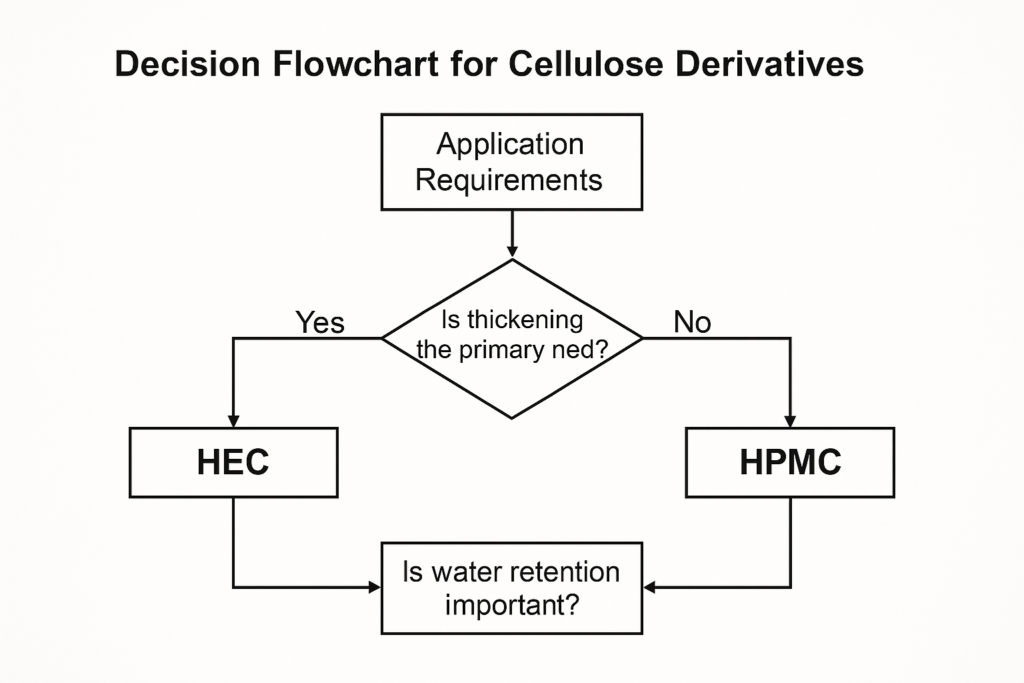
The selection process should be methodical and based on your specific application requirements. Through my years working with clients across different industries, I've developed a systematic approach to help you choose the right cellulose derivative:
Step 1: Define Your Application Parameters
Start by clearly identifying your critical performance requirements. Ask yourself:
- What temperature range will your product experience during manufacturing, storage, and use?
- What pH range must your product remain stable in?
- How important is immediate water retention versus extended workability?
- Will your product contain electrolytes or other potentially incompatible ingredients?
Step 2: Consider Manufacturing Constraints
Your production capabilities also play a role in this decision:
- Do you have the equipment needed for proper dispersion and dissolution?
- Can you implement hot/cold techniques required for HPMC?
- What are your mixing capabilities and limitations?
I remember working with a medium-sized paint manufacturer in Vietnam who invested in HPMC but lacked the proper dissolution equipment. Their products suffered from "fish eyes" and inconsistent viscosity. By either adapting their process or switching to HEC for certain product lines, we resolved these manufacturing issues.
Step 3: Evaluate Cost-Performance Balance
While HPMC often offers superior technical performance, HEC may provide adequate properties at a lower cost for certain applications. Consider:
- Is the premium performance of HPMC necessary for your specific application?
- Will the end-user perceive the performance difference?
- Does your price point justify the higher-cost ingredient?
WANHONG Customization Services?
Are you tired of one-size-fits-all cellulose derivatives that don't quite meet your specific needs? Many manufacturers settle for standard products that deliver suboptimal results, costing them efficiency and product quality.
At Kehao, we offer customized HEC and HPMC solutions tailored to your specific application requirements3. Our technical team analyzes your process conditions, performance needs, and formulation constraints to develop cellulose derivatives with precisely engineered properties for optimal results.
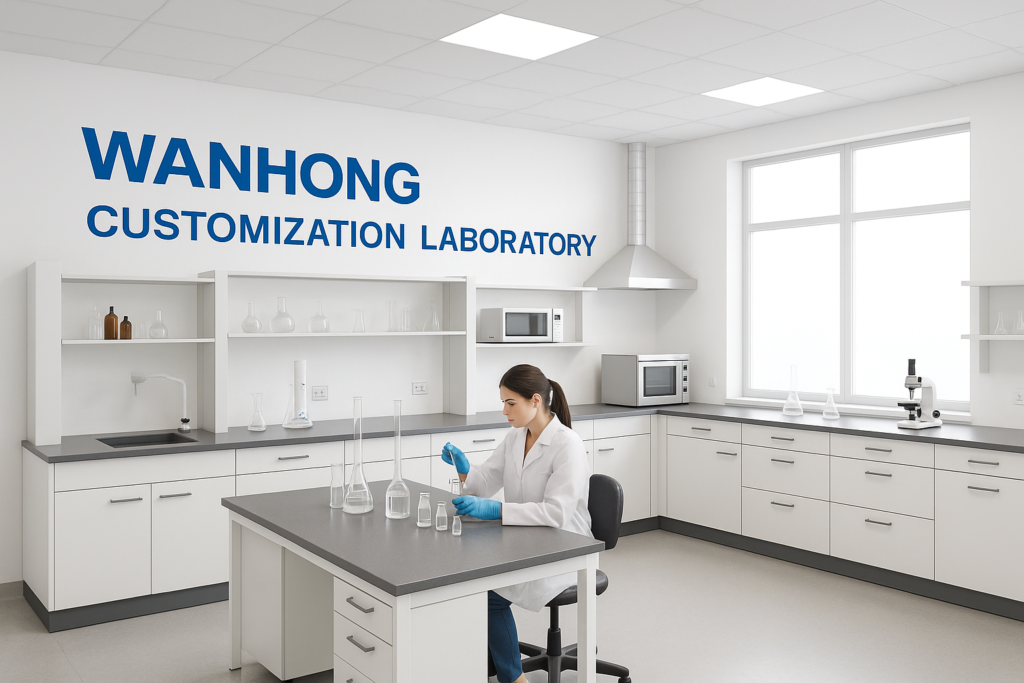
Our customization capabilities go far beyond simply adjusting viscosity grades. We can fine-tune multiple properties simultaneously to create truly application-specific products. This approach has helped countless clients overcome formulation challenges that standard market offerings couldn't solve.
The customization process begins with a thorough analysis of your application needs. Our technical experts work directly with your team to understand your process parameters, performance requirements, and any current challenges you're facing. We then develop a customized specification and produce trial batches for your evaluation.
One success story comes from our work with a major tile adhesive manufacturer in Saudi Arabia. They were struggling with inconsistent open time in their premium product line due to seasonal temperature variations. Standard HPMC grades couldn't provide the balance of properties they needed. Our R&D team developed a custom HPMC grade with modified substitution patterns specifically engineered for their application conditions. The result was a 30% improvement in open time consistency across different application temperatures, helping them maintain their reputation for quality regardless of seasonal conditions.
Our advanced production facilities include six production lines capable of manufacturing customized grades of HEC, HPMC, HEMC, CMC, HEC, and redispersible latex powder. This manufacturing flexibility allows us to adjust key parameters like:
- Molecular weight distribution for specific rheology profiles
- Substitution degree and pattern for tailored dissolution rates
- Particle size distribution for optimized dispersion
- Special treatments for improved compatibility with specific formulation components
Conclusion
Choosing between HEC and HPMC requires understanding your specific application needs. Consider temperature conditions, pH requirements, water retention needs, and compatibility factors. For truly optimized performance, Kehao's customization services can provide tailored solutions that standard products cannot match.
-
Explore the diverse applications of Hydroxyethyl cellulose and how it can enhance your formulations. ↩ ↩
-
Learn about the advantages of Hydroxypropyl methylcellulose in various industries and its unique properties. ↩ ↩
-
Learn how to assess application requirements to select the right cellulose derivative for your needs. ↩
